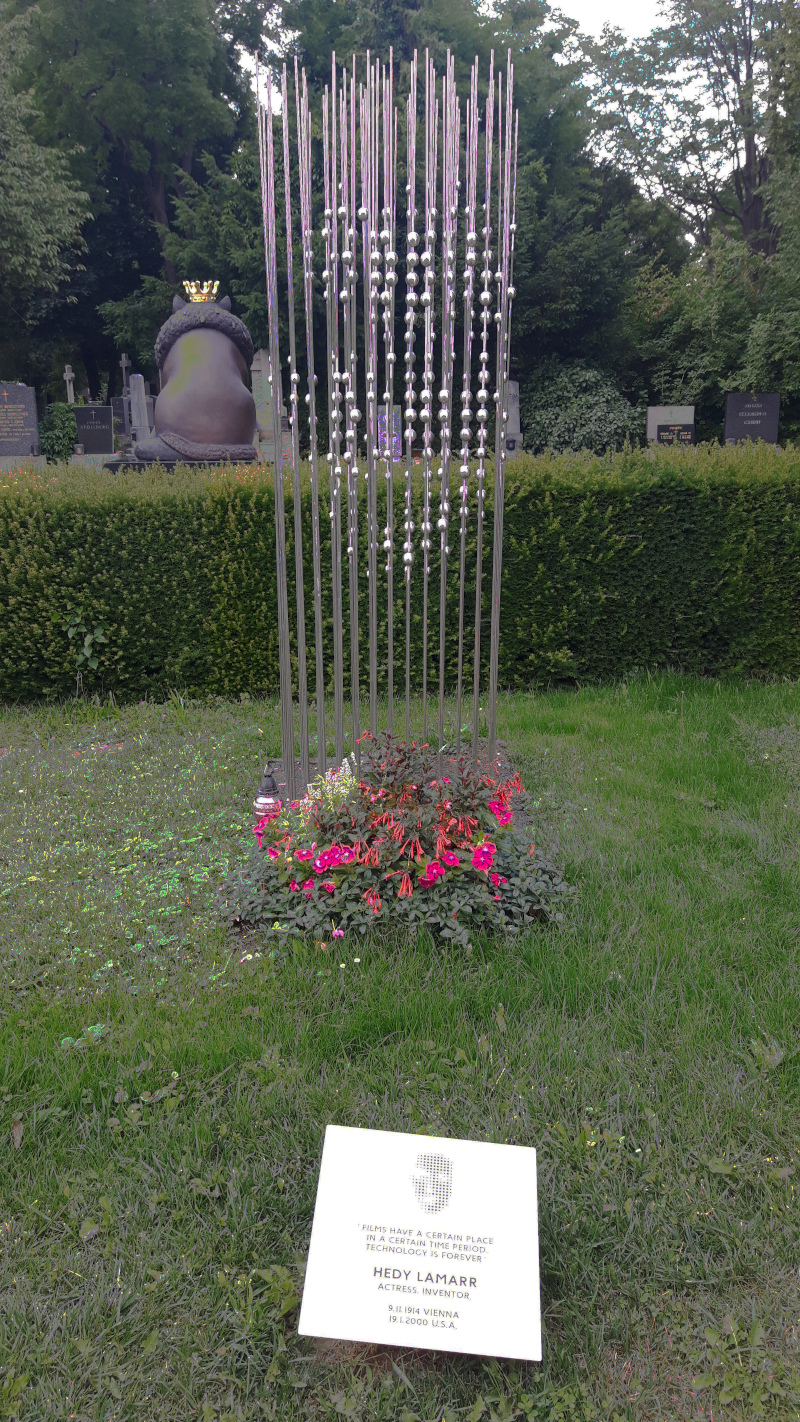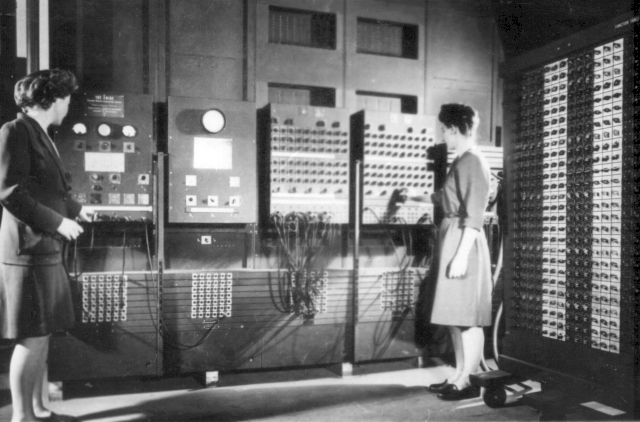Category: Women in Tech
A collection of famous(well, indeed mostly unknown) Women in Tech. There’s so many of them until in the late sixties something happened.
Important Women in CS Who Aren’t Grace Hopper • Hillel Wayne
Who’s worse to the climate? Young or old? Here’s some (german) facts …
Klimawandel: Sind junge Menschen klimaschädlicher als ältere? – Gerechtigkeit – bento
Fazit
Mit dem Alter verändert sich auch die Größe des persönlichen CO2-Fußabdrucks. Der Vorwurf, die junge Generation sei besonders klimaschädlich, stimmt also nicht.
Allerdings: Ein entscheidender Faktor für einen höheren CO2-Ausstoß ist das Alter nicht. Entscheidend ist vor allem das zur Verfügung stehende Einkommen, welches üblicherweise mit zunehmendem Alter wächst.
Es ist jedoch möglich, dass die heutige junge Generation im Vergleich zu früheren jungen Generationen klimaschädlicher ist: Zwar gehen seit Jahrzehnten die Emissionen zurück, allerdings hauptsächlich in Sektoren, die bei jungen Menschen ohnehin einen kleineren Fußabdruck hinterlassen, beispielsweise der Heizenergie.
Im Bereich des Privatkonsums könnten sie jedoch für einen höheren CO2-Ausstoß verantwortlich sein als ihre Vorgänger – belastbare Zahlen gibt es hierzu jedoch nicht. Sie sind nur schwierig zu ermitteln, da die Emissionen teilweise durch die Produktion im Ausland entstehen.
Was jedoch gesichert sein dürfte: Wer heute jung ist, wird auch in Zukunft tendenziell mehr CO2 ausstoßen. Viel entscheidender für den Klimaschutz ist ohnehin, dass alle Menschen ihre Emissionen verringern – egal ob jung oder alt.
A Female Pioneers Link Collection.
The 10 best female pioneers | Culture | The Guardian
An array of trailblazing women, from suffragettes to style icons
5 Female Pioneers of Software Development You Should Know
This lopsided workforce was not always the case. Lost in the records of programmer history is that women actually played some very key roles in the early days of coding. It is only in recent years that their stories are being told, with movies like Hidden Figures shining a light on the early heroines of code.
Female pioneers of science | Max-Planck-Gesellschaft
Contemporary Max Planck women scientists on six female trailblazers in history who persevered despite facing often daunting social obstacles.
#WomenInTech, part 256: Daphne Oram, “inventor” of Electronic Music.
“Daphne Oram (31 December 1925 – 5 January 2003) was a British composer and electronic musician. She was one of the first British composers to produce electronic sound, and was a pioneer of musique concrète in the UK.[1] As a co-founder of the BBC Radiophonic Workshop, she became a central figure in the evolution of electronic music.[2] She was the creator of the Oramics technique for creating electronic sounds using drawn sound. Besides being a musical innovator, she was the first woman to independently direct and set up a personal electronic music studio, and the first woman to design and construct an electronic musical instrument.[1]”
Hedy Lamarr’s grave in Vienna
Now that is a tombstone that suits the person. Beautiful, as she was. Both in appearance and genius. For those of you that don’t know her: She invented frequency hopping – without which lots of the things we do today with mobile networks and roaming wouldn’t be possible. And she performed the first femal orgasm on film. Not in porn, in a decent movie. Thanks, Bösi, for this beautiful memory.

So sad women still have a hard time traveling alone – but read this great article.
Why it’s still difficult for women to travel world … :
“A recent New York Times story documents a rise in the number of solo women travelers, and chronicles incidents in which these women have been murdered, injured, or sexually assaulted. Such fearmongering is dispiritingly common, in the press as well as colloquially. The woman who went out walking after midnight and ended up in a ditch has become a mythology passed down from mother to daughter. Men, who also fall victim to attack, are assumed to learn courage and street-smarts from these negative experiences, while a woman will be forever damaged or traumatized—or worse.”
Another link worth reading, also from the article above:
Excerpt: How Amelia Earhart navigated the skies and society … :
“The traditional difficult woman is generally outspoken, opinionated, and headstrong. She likes to shoot her mouth off, and has little interest in avoiding conflict; indeed, she finds it stimulating. Apple carts? She lives to upset them. For those of us who wish to be difficult but are introverted and see no reason we shouldn’t keep our opinions to ourselves, Amelia Earhart is our girl. Gracious and somewhat shy on the outside, she was willful and independent on the inside: polite, yet freewheeling, a person who answered to no one. She took the position that adventure is a worthwhile pursuit in and of itself—a radical stance for a woman.“
Studie zu Digitalem Stress in Deutschland
https://www.boeckler.de/pdf/p_fofoe_WP_101_2018.pdf
“Digitaler Stress in Deutschland – Eine Befragung von Erwerbstätigen zu Belastung und Beanspruchung durch Arbeit mit digitalen Technologien.”
Digitaler Stress: “Stresserleben, welches aus dem Unvermögen eines Individuums resultiert, mit neuer Technologie in einer gesunden Art umzugehen (Brod 1982).”
“Kernergebnis 6:
Frauen arbeiten an digitalisierteren Arbeitsplätzen, sehen sich als kompetenter an und haben ein höheres Level an digitalem Stress als Männer. Frauen nutzen im Durchschnitt 14 unterschiedliche Technologien am Arbeitsplatz, während Männer nur von durchschnittlich 12 digitalen Technologien am Arbeitsplatz umgeben sind.”
“Kernergebnis 8:
Die mit Verunsicherung im Umgang mit digitalen Technologien wird als größter Stressor wahrgenommen, aber auch Unzuverlässigkeit, Überflutung, Verunsicherung, Komplexität, Omni- und Dauerpräsenz. Mehr als ein Drittel der befragten Arbeit nehmer (37,5 %) empfinden ein hohes Maß an Unsicherheit. Demgegenüber empfinden nur 12,7 % ein hohes Maß an Omni- und Dauerpräsenz der Technologien, die somit unter allen sechs Faktoren von digitalem Stress am schwächsten eingeschätzt wird.”
Stichworte:
25% häufiger Kopfschmerzen hat, wer hohen digitalen Stress hat (im Vergleich zu Arbeitnehmern mit normalem Stress)
Digitaler Stress geht mit starkem Konflikt bezüglich der Work-Life-Balance einher (i.e. er wirkt sich auch stark auf das Privatleben aus)
Über 64jährige haben am wenigsten Digitalen Stress, am meisten haben die 35-44 jährigen und die darauf folgenden Jahrgänge.
22% ist der Anteil der Varianz in emotionaler Erschöpfung, der durch digitalen Stress erklärt werden kann.
Lady Trumpington, former Bletchey Park codebreaker, dies at 96 | Politics | The Guardian
Wikipedia: List of Great Women in Computing
Women in computing – Wikipedia :
“Women in computing have shaped the evolution of information technology. They were among the first programmers in the early-20th century, and contributed substantially to the industry. As technology and practices altered, the role of women as programmers has changed, and the recorded history of the field has downplayed their achievements.“
Wikipedia: Timeline of Women in Computing
Timeline of women in computing – Wikipedia:
“This is a timeline of women in computing. It covers the time when women worked as “human computers” and then as programmers of physical computers. Eventually, women programmers went on to write software, develop Internet technologies and other types of programming. Women have also been involved in computer science, various related types of engineering and computer hardware.“
Lise Meitner
Lise Meitner: Ohne ihre Entdeckung hätte es die Atombombe nicht gegeben | ZEIT ONLINE
Lise Meitner erkannte die Kernspaltung: ein Meilenstein, der die schlimmste aller Waffen ermöglichte. Doch davon ahnte die vor 50 Jahren verstorbene Physikerin nichts.
Africa, the role model in gender equality – at least in Rwanda.
Reality update: Brilliance overtakes beauty as Ms Geek Africa spotlights tech genius | Lauren Gambino | Global development | The Guardian … :
“Rwanda now leads the world in female representation in parliament, due in part to a quota system that reserves seats for women. Gender rights are enshrined in the national constitution and laws were changed to give women the right to inherit land and obtain credit.“
Agora – Hypatia of Alexandria

Hypatia of Alexandria lived in th 4th century A.D., in hard times for a female philosopher and scientist. According to Wikipedia, she is “the first female mathematician whose life is reasonably well recorded.” The astronomer and university teacher Hypatia tried to conserve the (ancient-classical) knowledge that was endangered by religious turmoil in the wake of the fall of the Roman empire.
Rachel Weisz plays a wonderful Hypatia in Amenábar’s movie “Agora“. In its end, she’s killed by religious fanatists (in this case Christian ones), who tear her skin off, mostly because she failed to comply with the religion’s rules and the position in society she was supposed to take.
Hedy Lamarr – Acting and Frequency Hopping

Hedy Lamarr (Hedwig Eva Maria Kiesler). The famous Austrian-American actress invented frequency hopping and was a well-known Hollywood actor, including the first ever portrayed female orgasm in a movie. 2014 she became a member of the National Inventors Hall of Fame.
Frances Spence – another unhonored ENIAC developer

One more from the core female developers of ENIAC. As other women, she mostly went unhonored – because female contributions didn’t match societies’ expectations:
Photos of these women working on the computer often went without credit in newspapers at the time, and when the ENIAC was completed and unveiled to the public on February 15, 1946, the US Army failed to mention the names of the female programmers who had programmed the machine to run such sophisticated calculations. This further contributed to the perceived disconnect between women and computing.
ENIAC: Betty Jean Jennings Bartik

Bartik was one of the leading developers of the ENIAC trajectory computer, and she was quite proud of its first public presentation in 1946:
“The day ENIAC was introduced to the world was one of the most exciting days of my life. The demonstration was fabulous. ENIAC calculated the trajectory faster than it took the bullet to travel. We handed out copies of the calculations as they were run. ENIAC was 1,000 times faster than any machine that existed prior to that time. With its flashing lights, it also was an impressive machine illustrating graphically how fast it was actually computing.”
The first woman to win the Turing Award: Frances E. Allen

Frances Allen became the first woman to win the Turing Award (2006). She worked 45 years at IBM, helped develop Watson and trained FORTRAN in the 60ies already.
Ada Lovelace – inventor of programming algorithms

Augusta Ada King-Noel, Countess of Lovelace (born Byron; short: Ada Lovelace) is said to be the world’s first programmer. She was the first human to recognize that Charles Babbages’ Calculation engine could serve for more… and published the world’s first algorithm.

